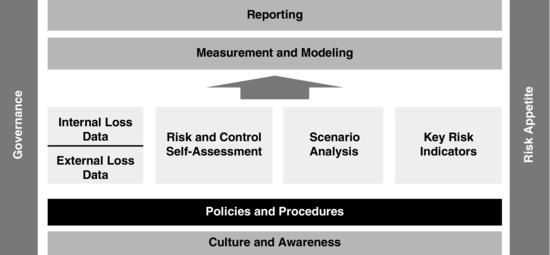CHAPTER 6
Policies and Procedures
This chapter explores the important role of strong policies and procedures in an effective operational risk framework. It also considers the role of standards and guidelines documents. Example content is provided for an operational risk policy, as well as samples from procedures, standards, and guidelines.
THE ROLE OF POLICIES, PROCEDURES, GUIDELINES, AND STANDARDS
In recent years, financial services firms have embraced the importance of having clearly articulated and consistently documented policies, procedures, standards, and guidelines. These written documents serve to articulate the firm's interpretation of rules and regulations, and their chosen approach to meeting those requirements.
It has become clear that it is necessary to have objective goals against which to measure performance. Well-documented policy and procedure documents can help to meet this need. Firms have also learned the sometimes painful lesson that good documentation is needed in order to demonstrate that regulatory requirements have been incorporated into the business processes of the firm.
Policies and procedures form an essential foundation for a successful operational risk framework, as is illustrated in Figure 6.1.
FIGURE 6.1 Policies and Procedures in an Operational Risk Framework

As well as continuously improving the content of such documents, many firms have sought ...
Get Operational Risk Management: A Complete Guide to a Successful Operational Risk Framework now with the O’Reilly learning platform.
O’Reilly members experience books, live events, courses curated by job role, and more from O’Reilly and nearly 200 top publishers.

